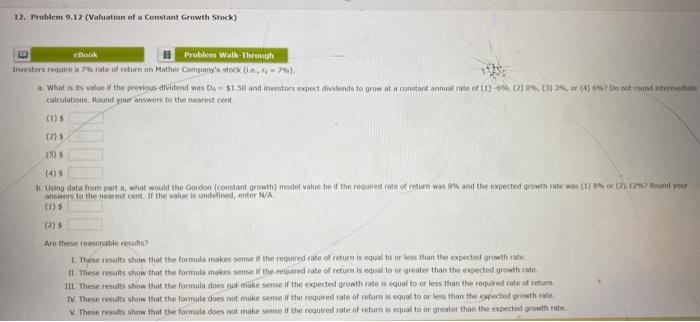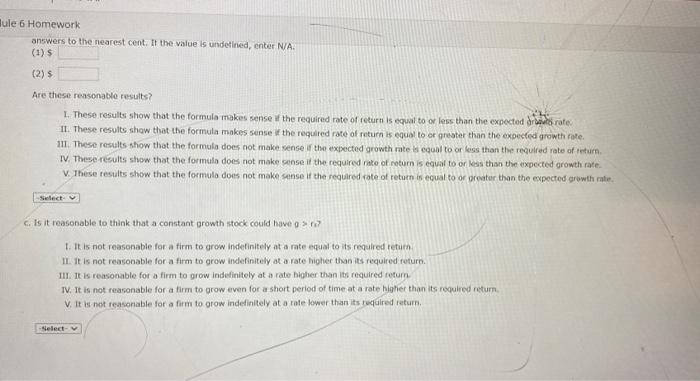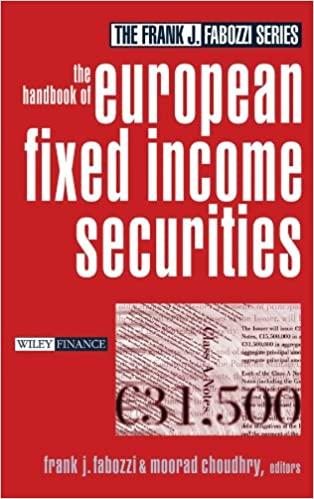calculations. Hosind your canswers to the newwet oort. (1) 4 (7) 5 . (3) 5 (4) 5 . answars to the nearnst cent if the value is untedined, encer N/A. (1) 4 ) (2) 3 Art these fasonabte revults? 1. These results show that the formula makes sense if the required rate of retann is equal to or lexs than the kxpected growth rate. 1f. These rosults show that the formula makes sense if the required fate of return is equal to or greater than the exsected arewth rate. III. These results show that the formula does hot make sensed if the expected growth rate is equal to or less than the required rate of rebarn. TV. These resulis show that the formwis does not make sense if the required rate of return is equal to or less than the whicted gremth eate answers to the nearest cent. It the value is undeflined, enter N/A. (1) 5 (2) 5 Are these reasonathe restals? 1. These results show that the formula makes sense af the required rate of fecurn is equal to or less than the expected druingigafe. 11. These results shaw that the formula makes sense if the required rate of return is equal to er greater than the expecfed growth fate. 1II. These resalts khow that the formula does not make vense if the expected growth rate il equal to or kess than the required rate af return. M. These results show that the formula does not make. Mense if the required nake of return is equal to or kess than the expected arowth rate. V. These results show that the formula does not make sense if the reguired rate of return is eeual to or broater than the expected growth mate. C. is it reasenable to think that a constant arowth stock could have 0>rs? ? 1. It is not reasonable for a firm to grow indefinitely at a rate equal to is required return. 11. It is not reasonable for a firm to grow indefinitely at a rate higher than its required return. 111. It is reasonable for a firm to grow indefinitely at a rate higher than its required fefurn. TV. It is not reasonable for a firm to grow even for a short period of time at a rate higher than its required retum. V. It is not reasonable for a farm to orow indefinitely at a rafe lower than its required return








